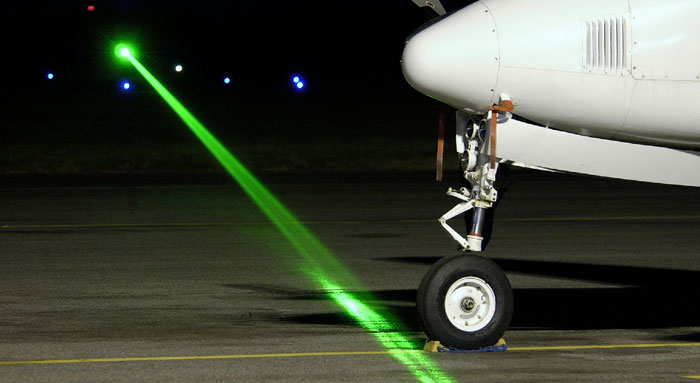Green laser technology to combat bird strikes at Middle East airports.
 Other News
Other News Subscribe to newsletter
Subscribe to newsletter
| 18 May 2008 |
Green laser technology that sweeps airport runways to scare away birds could help regional civil aviation authorities to combat a large threat to aircraft safety during take off and landing. Bird and wildlife strikes to aircraft costs the US civil aviation industry more than US$600 million annually, while 220 people have been killed world-wide as a result of bird strikes in the last 20 years.
According to the International Civil Aviation Organisation, 90 percent of bird strikes occur at or near airports during take-off or landing and the US Federal Aviation Administration has reported 61 per cent of bird strikes occur at less than 30 metres. Nearly 65 per cent of bird strikes occur at dawn or dusk, when birds are on runways in search of food.
As the region’s aviation industry expands and the volume of air traffic continues to increase, so too does the serious threat posed by bird strikes, but a French firm’s sophisticated laser technology could help many airports throughout the Middle East solve the problem.
Lord Ingenierie will use the Airport Show, taking place at Airport Expo Dubai from 2-4 June to educate the Middle East aviation industry about their latest generation green laser technology, which is already used by more than 40 airports around the world.

The green laser ‘bird strike’ technology is currently in use at more than 40 airports around the world.
The automatic laser system, TOM500 and handheld laser torch, LEM50 were developed by ornithologists from the French Civil Aviation Authority and the technology has proven to be highly effective at clearing birds from runways and airports. The TOM500 laser scans airport runways and surrounding areas at regular intervals, on pre-programmed paths close to the ground, frightening birds away by the stick-like effect of the laser.
“This technology is very effective because it uses a green, collimated laser beam,” said Franck Monin, Director of Sales and Marketing at Lord Ingenierie. “Ornithologist surveys have demonstrated that birds are very visual animals and are primarily sensitive to the colour green. Birds perceive and actually see a (virtual) green stick coming towards them. The only alternative to avoid a stick blow is to fly away.”
“There is also no bird habituation to this technology. A bird will get used to acoustics, but it won't ever try to test a stick blow, it’s the same reflex as a bird flying away as a car approaches. There has also been no visual hindrance reported by pilots, during the day or at night.
Organised by Streamline Marketing Group, the Airport Show provides a unique opportunity for suppliers of specialist airport equipment and new technology, to meet with regional airport authorities and developers.
Nick Webb, Director of Streamline Marketing Group, said: “This year’s show is expected to attract 600 of the world’s leading airport and aviation suppliers, aiming to capitalise on more than US$68 billion worth of airport development across the Middle East, Africa and Indian sub-continent. Exhibitors from 40 countries will have the chance to meet with developers from across the region, and showcase their new technology and aviation solutions.”
Lord Ingenierie will manufacture 35 (TOM500) automated laser units over the next 18 months and expects the technology to be of great interest to regional airport owners and developers, particularly as many airports are in close proximity to the coast and ocean, and typically attract birds.
“The Airport Show provides the perfect forum to educate airport authorities in this region about the effectiveness of our green laser technology. It’s a fantastic opportunity to penetrate this untapped market and achieve huge business growth,” Monin said.




